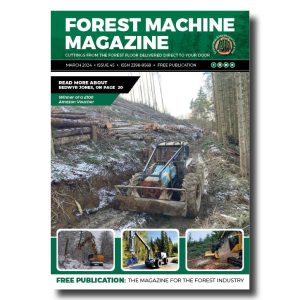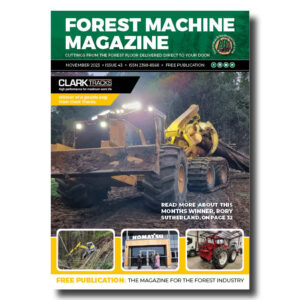Reforestation as a climate solution – the Swedish example
Image: The Private Forestry Programme
The Private Forestry Programme (PFP) is a cooperation between Tanzania and Finland to support the establishment and management of plantations by smallholders.
Reforestation combined with reduced emission reductions and sustainable use of biomass can change the carbon balance in the atmosphere to our advantage.

-
That’s a remarkable amount of work hours for a single machine, the Norcar 600 owned by Erkki Rinne is taken well care of, it even has the original Diesel engine.
-
Kieran Anders is a forestry contractor working in the lake district. His work involves hand cutting and extracting timber using a skidder and tractor-trailer forwarder.
-
It is not possible to eliminate chain shot, but there are simple steps that can be taken to reduce the risk.
-
Arwel takes great pride in the fact that the mill has no waste whatsoever, “the peelings are used for children’s playgrounds, gardens and for farm animals in barns in the winter and the sawdust has multiple uses in gardens and farms as well.
-
Timber hauliers need to encourage young blood in, and also look after the hauliers we have, we need make the sector a safe and positive place to work.
FIND US ON
From bare heaths to green forests
Sweden’s journey from deforestation to forest success can offer a hopeful model for the world.
In the mid-1800s, Sweden faced severe deforestation and poverty. Forests had been cut down for fuel and building materials without reforestation, leaving behind bare landscapes. Southern Sweden, which had previously been rich in forest, was dominated by low-productive heathlands.
A turning point came with the Forestry Act of 1903, the world’s first modern forest law, which required reforestation after felling. Organisations such as Skogssällskapet mobilised communities to restore forests, transforming the deforested landscape – and thus the economy.
Global Potential for Reforestation
As a tool to mitigate climate change, researchers have been investigating how reforestation can contribute. The ability of forests to absorb carbon dioxide (CO₂) makes them a powerful tool for climate action. A 2019 study estimated that 900 million hectares of land globally could be reforested, potentially removing 205 gigatonnes of carbon from the atmosphere – almost two-thirds of the carbon supplied by humans.
However, more recent studies warn of practical challenges – such as land use conflicts, risks to biodiversity and access to water – that reduce this potential. Despite this, 389 million hectares remain suitable for reforestation, offering significant climate benefits.

Forests, coal and the substitution effect
Sustainably managed forests can increase carbon sequestration, reduce the use of fossil raw materials and support long-term climate goals. When trees are felled before they reach full maturity and replaced with new ones, the forest continues to absorb CO₂. Products made from wood also store carbon and can replace fossil-intensive materials.
The demand for renewable and fossil-free products is market-driven, which means that the demand for forest raw materials is increasing. Using forest products instead of fossil-based ones avoids emissions – this is called the substitution effect.
Recycling enhances this effect. In Sweden, the climate benefit is doubled by recycling forest products after use, especially through recycling of paper.
Source,Skogsforsk
Sign up for our free monthly newsletter here
Contact forestmachinemagazine@mail.com to get your products and services seen on the world’s largest professional forestry online news network.
#homeoflogging #writtenbyloggersforloggers #loggingallovertheworld
Written by loggers for loggers and dedicated solely to the equipment used in forestry operations.







